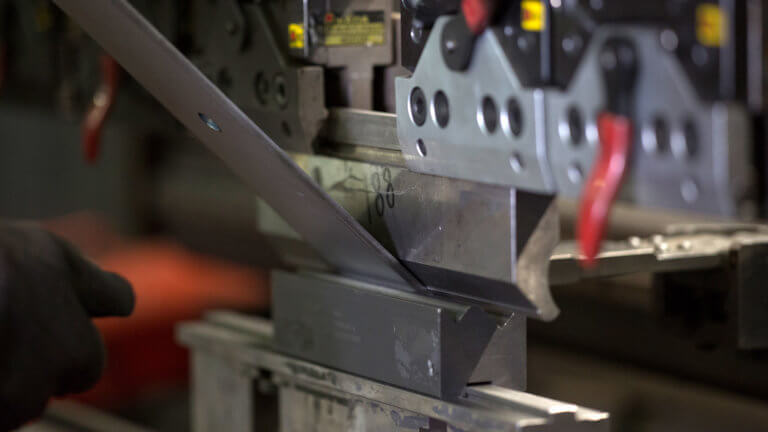Metal Forming: Bending Raw Steel into Functional 3D Components
October 09, 2019

Before modern technology was applied to the process, metal forming was more of an art than a science. Skilled press brake operators used their talent and experience to form templates for each part. Even the most experienced worker could go through a lot of steel before perfecting the prototype. Not only was this approach costly in terms of scrapped materials, but people with this kind of skill and knowledge are getting harder and harder to find as a whole generation of press brake operators reach retirement age. To be competitive, progressive companies had to bring the process into the 21st Century.
Modern Machines
The press brake has made huge progress in terms of technology and automation. In our shop, they can handle bend lengths up to 9 feet, and with bending forces up to 275 tons, our 12 factory press brakes utilize an electro-hydraulic servo drive system that can make bends in metal sheets thicker than the average shop can handle.
Press brakes now operate off a CNC controller, which speeds up setup time and greatly enhances accuracy. Additional features such as intuitive human machine interface (HMI)and automated backgauges (which move along several different axes in order to position a piece of metal for forming), have also made a big impact on streamlining processes and production workflow.
Design the Part
Before a job reaches our press brake department, one of our engineers builds a CAD and Solidworks model from the customer’s prints.The software we use is so accurate that actual working prototypes are usually not required, which is a huge cost savings in time and material. The press brake program is saved into a central database so it can be easily retrieved by any operator on the floor.
A Simplified Forming Process
The order is downloaded electronically to the integrated CNC unit on the press brake machine. Operators open the order, pull the proper program from the server and set up the press brake for the correct dimensions before starting the machine. The results?
- Perfectly uniform bends
- Reduced set up time (optimized trial and error)
- Virtual design limits guessing
- Better process control
- Huge reduction in scrapped prototype pieces
- Levels the playing field for all press brake operators
How well does all this work? Forming non-conformances were the number one problem for quality control in our business. Today, they hardly make the list.
In-House Tooling
To speed up operations even more and attain superior levels of quality, we have our own machine shop right on the premises. Fixtures for new jobs can be machined and fabricated as needed and parts can be finished without leaving the plant.
How versatile is our metal forming process? When asked if he could use it to program and stamp components for a military tank, JasonMing, our Production Manager, simply said, “Give us the order and we’ll build it.”

